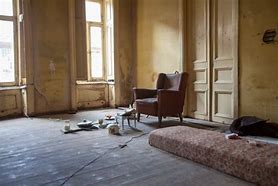Avoiding the intrusion of squatters is crucial, as once they settle in, it can consume months, along with substantial time and money to remove them. Taking proactive measures is the key. Here are some steps to prevent squatters from taking control of your vacant property:
Fortify entry points: Secure all windows and doors and avoid hiding spare keys in prominent places.

Deploy security cameras: Ensure comprehensive property coverage, strategically placing cameras in areas challenging for tampering.
Eliminate the appearance of vacancy: Avoid showcasing vacant images when marketing your home online; this is why Harb and Co. often virtually stage our vacant listings.
Don’t call attention to the home. Often, we don’t place a For Sale sign on our vacant listings. Prevent mail from piling up and use timed lights to create the illusion of occupancy.
Regular property checks: Your Realtor should check on the home often. Inform your neighbors and ask them to report unusual activities, prompting them to notify you and the police.
Notify local authorities: Inform your local police about the vacant status of your house, filing necessary forms or documents. Establishing this relationship beforehand can facilitate quicker response and verification in case of incidents.
Squatters, often associated with homelessness or substance abuse, are no longer confined to rundown areas. This issue now extends to well-maintained homes in owner-occupied neighborhoods, often by individuals blending in seamlessly. Contributing factors include economic hardships, lenient laws, and increased information accessibility, allowing squatters to exploit legal gaps and leverage social media.
Given the time and expense involved in legal eviction, the optimal strategy is avoiding squatters from entering your property. Ensure security, install cameras, conduct regular property visits, and create the appearance of someone living in the home to safeguard it.





Some of the squatter stories on the news these days is terrifying. Very timely advice